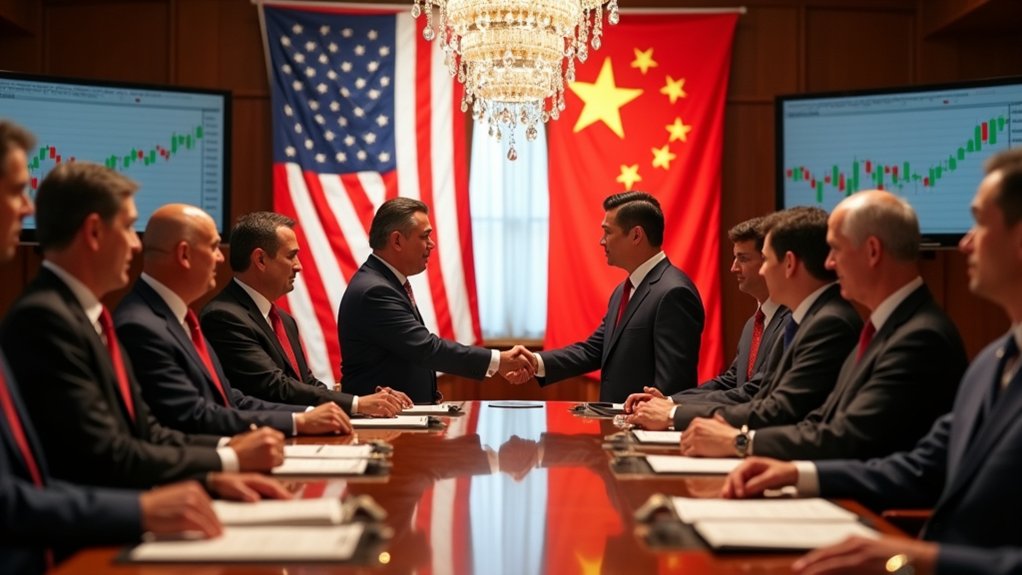The Phase One trade deal, signed January 2020, aimed to ease U.S.-China tensions through massive purchase commitments and intellectual property reforms. China pledged to buy $200 billion in U.S. goods over two years but hit only 58% of that target. The agreement established bilateral talks for disputes and included tariff exemptions on 696 U.S. products. While trade gaps initially shrank and markets stabilized, the deal’s long-term effectiveness remains a complex economic puzzle.

While trade wars rarely produce clear winners, the Phase One trade deal signed between the United States and China on January 15, 2020, aimed to ease years of mounting tensions.
The agreement tackled thorny issues like intellectual property rights, technology transfer, and agricultural trade – problems that had been festering between the world’s two largest economies since 2018.
China made some hefty promises.
They pledged to buy an extra $200 billion in U.S. goods and services over 2020 and 2021.
The shopping list included everything from soybeans to manufacturing equipment.
The data shows China only achieved 58 percent of their total purchasing commitments.
To sweeten the deal, they threw in tariff exemptions on 696 U.S. goods.
Not bad for a start.
The deal wasn’t just about shopping sprees, though.
It set up a new way to handle disputes – bypassing the WTO entirely.
Both sides could now duke it out directly through bilateral talks.
If someone didn’t play nice, tariffs could snap back into place faster than you can say “trade deficit.”
Speaking of deficits, the U.S. trade gap with China actually shrank in 2019 – the first drop in six years.
But let’s be real: China’s economy took a beating, with GDP growth hitting its lowest point in 30 years.
The deal’s impact on international trade highlighted the interconnected nature of global economies in unprecedented ways.
The US-China Business Council praised the agreement for bringing much-needed stability to trade relations.
Global supply chains went haywire, and financial markets rode a roller coaster of uncertainty.
The agreement tried to tackle some long-standing gripes about intellectual property theft and forced technology transfers.
New rules said tech transfers had to happen on market terms – no more arm-twisting allowed.
They beefed up patent protections too, though enforcement remained a question mark.
Did the deal live up to the hype?
Well, early assessments showed China missed that ambitious $200 billion purchase target by 2022.
But the agreement did manage to cool things down a bit between Washington and Beijing.
Markets breathed a sigh of relief, even if some thorny issues remained unresolved.
Sometimes, half a loaf is better than none – especially when global trade is at stake.


